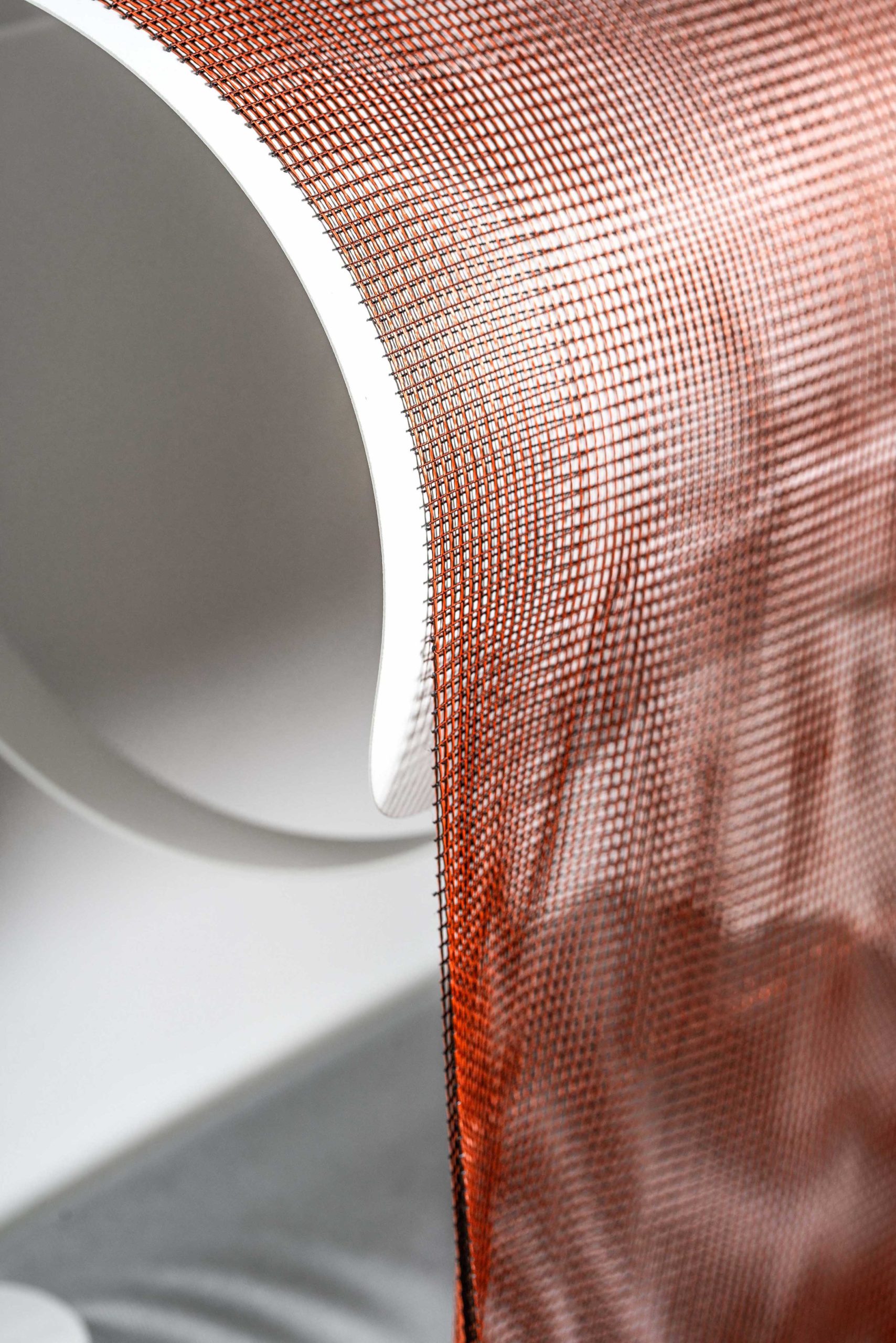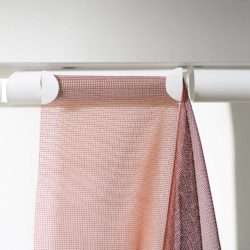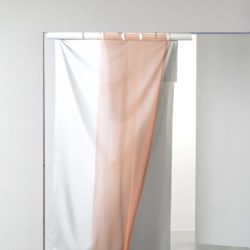Lé
Description
Lé is a modular textile room hanging. Sheet metal modules on the wall or the ceiling enable hanging and rearranging pure textile panels in the living area. The textile surfaces are attached by magnetic connectors which makes them variably and intuitively usable. The objects serve for structuring rooms, acoustic optimization, covering, sun shading or displaying and curating textiles.What is the Topic?
The topic of my work with the title "Responsive Surfaces - Textile Interventions in the Living Area" relates to fundamental textile properties, of which the responsive is the most central and characteristic quality that seperates textiles from other materials and makes them so unique. They react to the slightest physical influencing factors in a very direct yet gentle way. They have a huge impact on rooms while per se being flexible and of low volume at the same time. It is also about textile furnishing, what role it plays and why it does so. Could or should it be different? And if yes, how? The product is a proposal on how to communicate, present and formally redesign textile decor and furnishing.
Why does it look like this?
Regarding the formal aesthetic, the product satisfies a need for plain clarity and complies with a contemporary conception of elegance and sensuality. It emphasizes the textiles and their materiality instead of hiding them behind crinkled piles of fabric. The form of the sheet metal modules can be understood as a reference to fabric rolls and further on plays with analogies between sheet metal and textile materials, which are so alike and yet so different.
What is special?
What is special is mainly the use of pure textile surfaces, that can be arranged and combined in a completely free manner - without any predefined fixing points. An additional particularity is the aesthetic expression that relates to current developments in domestic culture and contemporary living concepts.
What is new?
The application of large textile surfaces in the living area has been reserved to curtains so far. It always needs loops, straps, clamps and sliders and creates the classic image of draped curtains. Conversely it is totally new to hang fabrics as panels with completely free fixing and positioning, presenting them as interactive exhibited objects that want to be touched.




